

Additional Pictures!
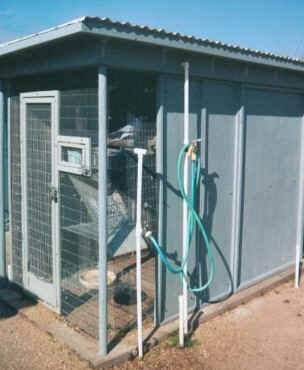
|
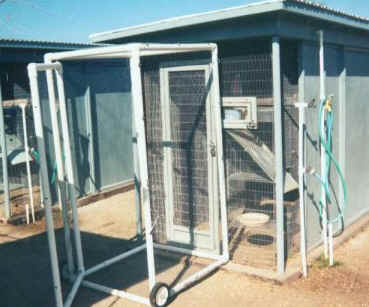
|
|
|
Each cage has a roof that adjusts up at an angle to let the cool air in during hot weather. Also, every cage equipped with individual misting systems, automatic waterers and hoses for each cage too. Lockable entry door is to the left and the smaller outside access feeding door is to the right. Wooden panels on the sides can be removed for more air circulation during the Summer months and replaced for Winter. Cages rest on a poured cement foundation for easy cleaning and escape proof safety.
|
Here is a PVC framed "ante room" device, covered in aviary netting and on two rolling wheels for easy maneuvering. It can be rolled up to the aviary door, hooked snugly on to the side of the aviary wire with two large hooks the bird keeper enters through the anteroom door, closing it behind for safety. The cages can be safely serviced with no threat of the birds escaping. Wonderful invention!
|
|
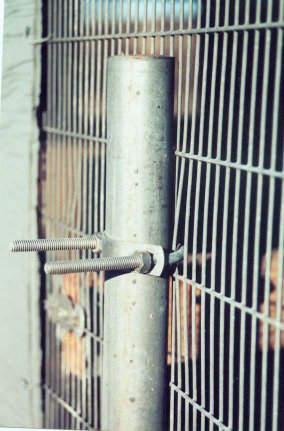
|
|
|
|
Close up showing the method of attaching the poles used to stabilize the wire for the cage panels.
|
A panel of wire is installed to hang loosely from the top, inside a service door. The panel is slightly larger than the size of the door. This safety wire can be pushed forward from the bottom, but will prevent a bird from escaping.
|
|
|
|
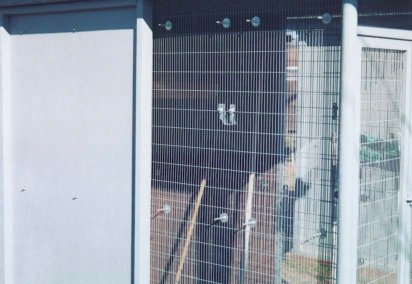
|
|
|
Detail of the entry door, feeding door, support post and automatic waterer.
|
This view of the side of the cage shows the hardware in place so the cold-weather panels can be installed easily.
|
|
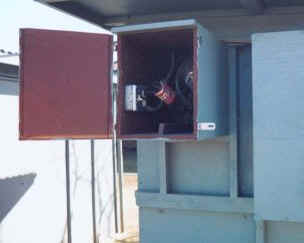
|
|
|
|
This is the back view of the aviary with the opened door showing the heating device on the left. To the right is the nest box with the inspection hole at the bottom, hasp and lock safely in place.
|
View of the heater and the enclosed box housing it, located in the back of the cage. There is a wooden track in the center of the box that the heater lamp can be moved forward or back along, according to how cold the
weather is. |
|

|
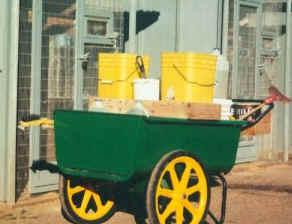
|
|
|
A look inside the cart shows buckets of food and all the tools and implements needed for servicing the cages, handily assembled right in one convenient, portable place.
|
Here is the nice large, flat cart used for servicing the cages. | |

|
|
|
|
Piece of Plexiglas that slides back and forth and can be secured, to shut birds out of the nest for inspection of their eggs.
|
This is a back view of the aviaries with the service areas for the heaters and nest boxes. Jeannette used large roomy boxes for her Rosies with double entry holes.
|
|

|
|
|
|
A closet was converted to an incubation area, with nearby shelves holding all the important items pertaining to hatching babies. Books, lights, tubs, towels and all the things you would want at your fingertips when
those divine little pink babies are preparing to emerge from the shell. |
Here is the room where the babies go to wean and first get used to being in a cage. Rosies are about six weeks old when they are introduced to a cage and most of them completely wean themselves at eight to nine weeks
old. It is a luxury to have a nice light room like this, apart from the rest of the house with a smooth, easily cleaned tile floor. |
|
|
Photography by Susie Christianİ |
||